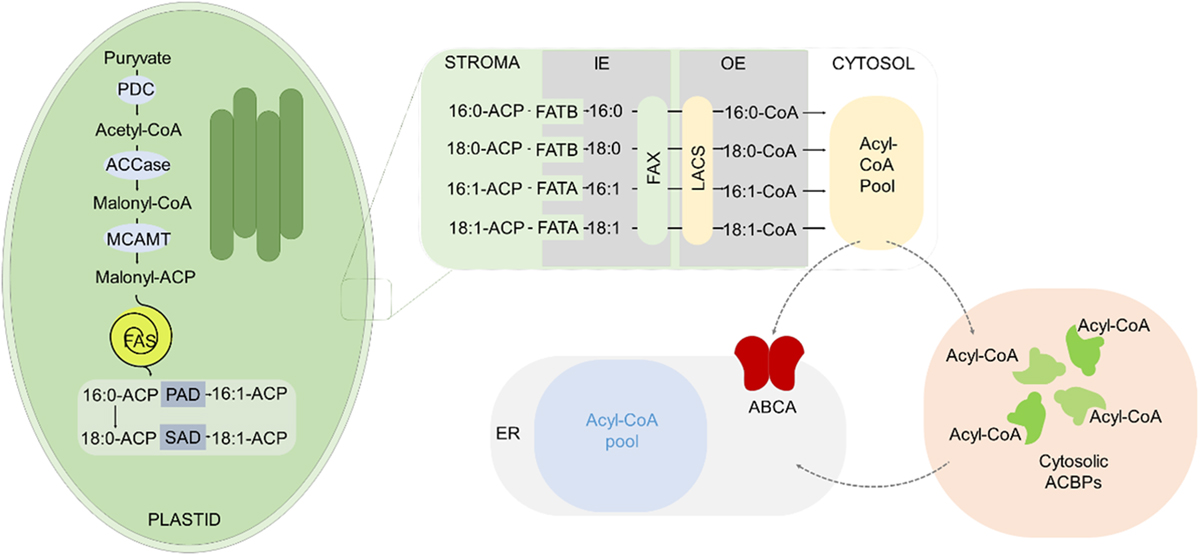Fig. 1

Download original image
General overview of fatty acid biosynthesis and eukaryotic pathway of CoAs origin in oilseed cells. Fatty acid synthesis takes place in plastids where malonyl-ACP is used as a substrate. FAs are synthesized by FAS complex in a series of condensation and elongation reactions which lead to formation of FA conjugates with ACP proteins. Their channeling to cytosol includes hydrolysis by thioesterases (FAT) to free fatty acids at the inner plastid envelope membrane (IE), followed by their transfer through the membrane mediated by FAX proteins. Once they reach the outer plastid envelope membrane (OE) they undergo vectorial acylation catalyzed by LACS enzymes. The resulting acyl-CoAs are transferred to the cytosol. The cytosolic pool of acyl-CoAs directly interacts with ACBP proteins, which serve as major transporters of acyl-CoAs from the cytosol to the ER. In the ER, acyl-CoAs are used as acyl donors for TAGs synthesis pathways. Abbreviations: ABCA: ATP-binding cassette (ABC) transporter subfamily A; ACBPs: acyl-CoA binding proteins; ACCase: acetyl-CoA carboxylase; ACP: acyl carrier protein; CoA: coenzyme A; FAs: fatty acids; FAS: fatty acid synthase complex; FATA/B: fatty acyl-ACP thioesterase; ER: endopsamic reticulum; FAX: fatty acid export protein; IE: inner plastid envelope; LACS: long chain acyl-CoA synthases; MCAMT: malonyl-CoA: acyl carrier protein S-malonyltransferase; OE: outer plastid envelope; PAD: palmitoyl-ACP desaturase; PDC: pyruvate dehydrogenase complex; SAD: stearoyl-ACP desaturase.
Current usage metrics show cumulative count of Article Views (full-text article views including HTML views, PDF and ePub downloads, according to the available data) and Abstracts Views on Vision4Press platform.
Data correspond to usage on the plateform after 2015. The current usage metrics is available 48-96 hours after online publication and is updated daily on week days.
Initial download of the metrics may take a while.




